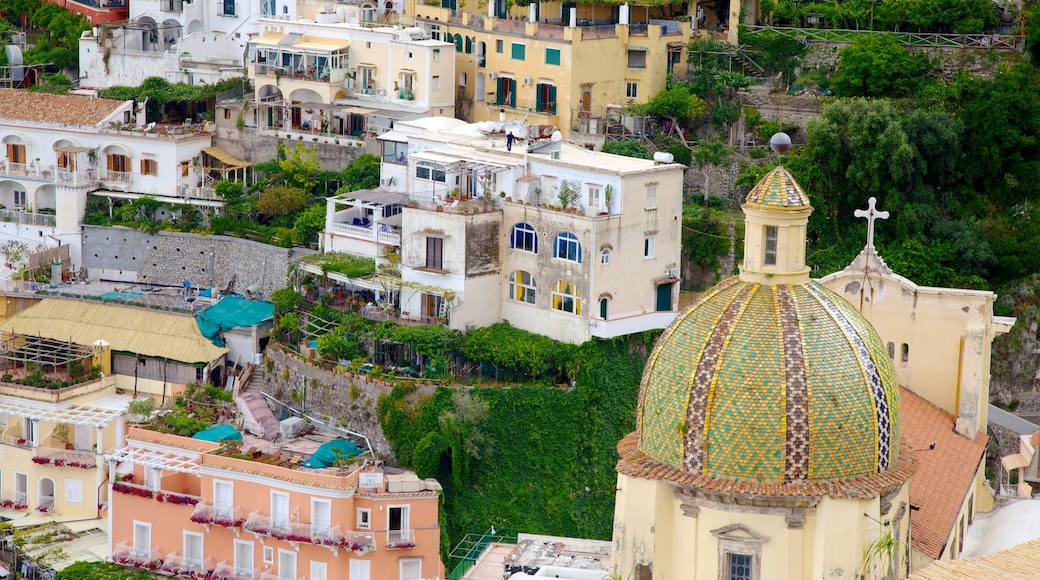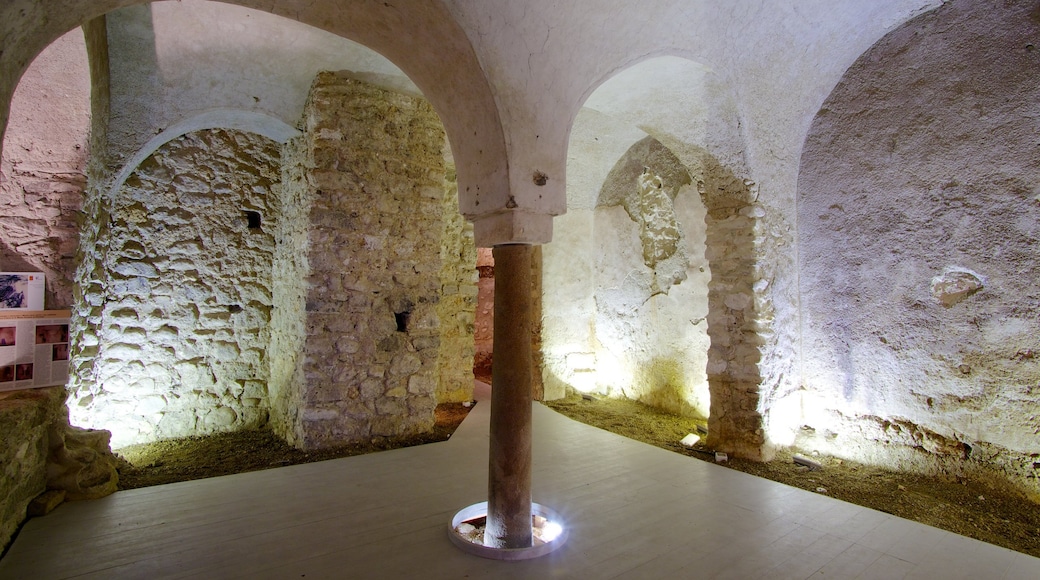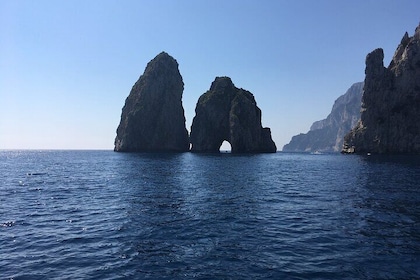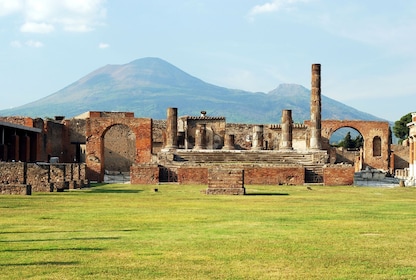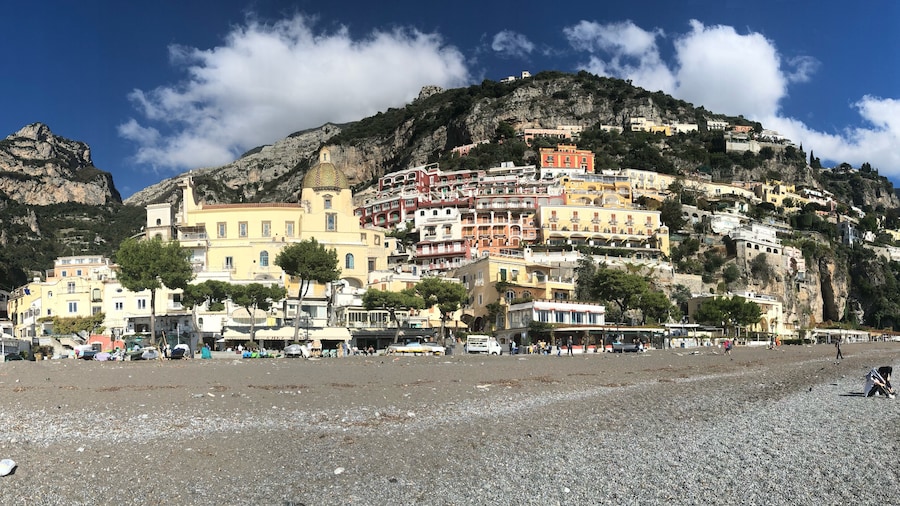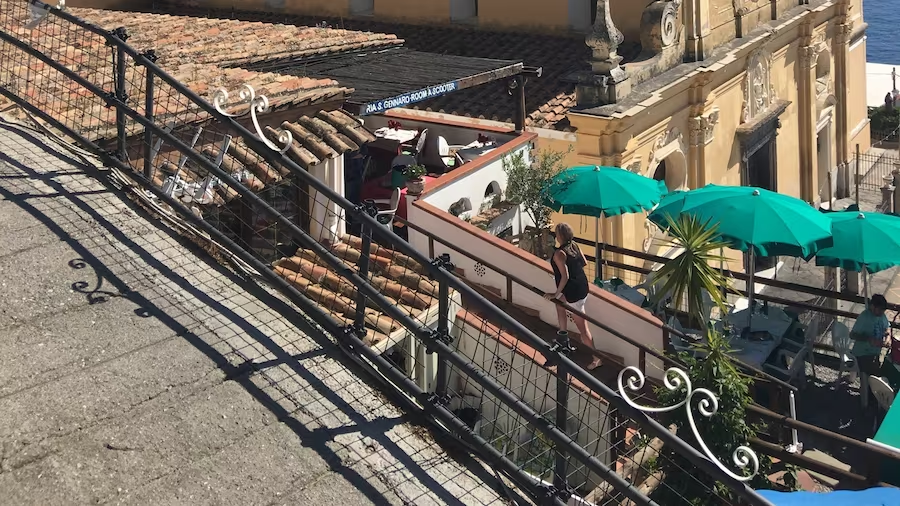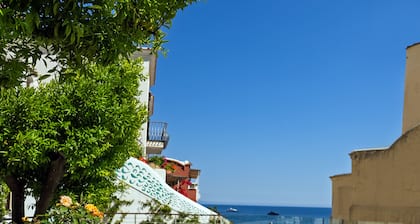A central dome clad in yellow, green and blue majolica tiles make the church of Santa Maria Assunta one of Positano’s distinctive landmarks. This 10th century structure was built on the site of a former Benedictine Abbey dedicated to San Vito, an early patron saint of Positano.
Before going inside, stop in the small piazza in front of the church to enjoy the building’s façade and 18th century bell tower. Note the bas-relief of fish, fox and a mythical dragon-like creature just above the bell-tower door. It’s one of the few surviving relics of the original abbey. Just above the carving is a gravestone that commemorates Flavio Gioia, the man who is said to have invented the compass. Many people dispute the fact that he invented the compass and argue he never even existed, but locals stand their ground about the story.
Take your time to study the church’s white and gold interior. Admire the 12th century Byzantine icon of the Black Madonna, situated above the main alter. According to one legend the icon was aboard a ship that was stranded off Positano’s coast. The sailors believed they heard it calling out to be put down. When the captain interpreted that as the Virgin wanting to stay in the seaside town, the ship moved on and left the icon on the mainland.
Artwork is scattered among the side chapels and above altars, including the painting Circumcision by Fabrizio Santafede. Observe the winged cherubs above the arches.
During renovation work on the church’s crypt a Roman villa was discovered. The remains of the villa contain a number of well-preserved frescoes with images of seahorses, griffins and cupids. This archeological site remains closed to the public while excavations continue.
The Church of Santa Maria Assunta is situated several feet back from the main beach and is visible from most areas of Positano. The church is open daily and admission is free.


